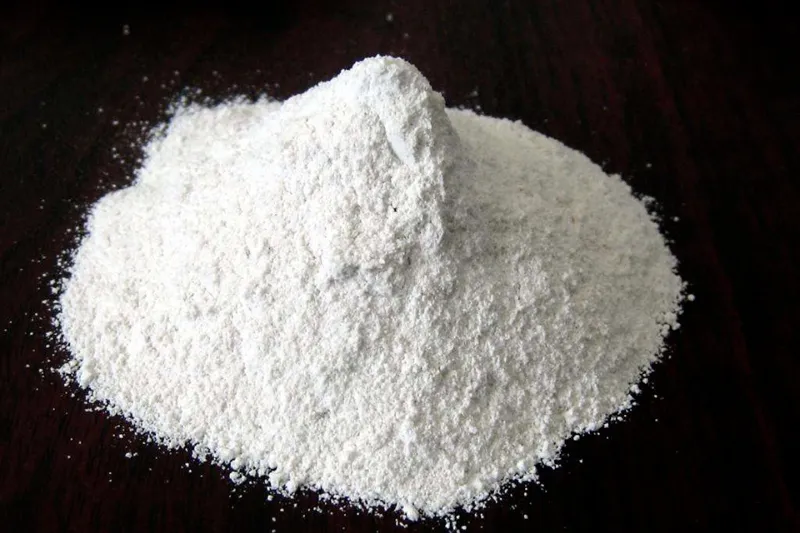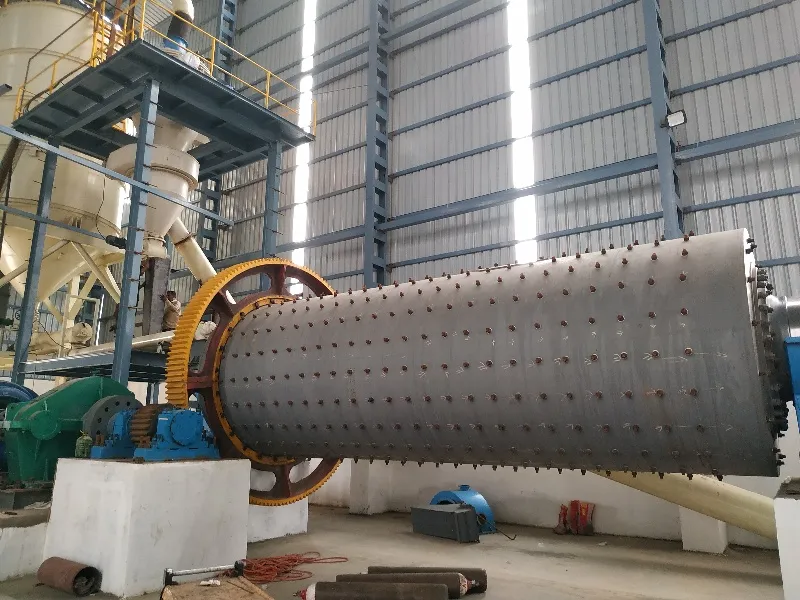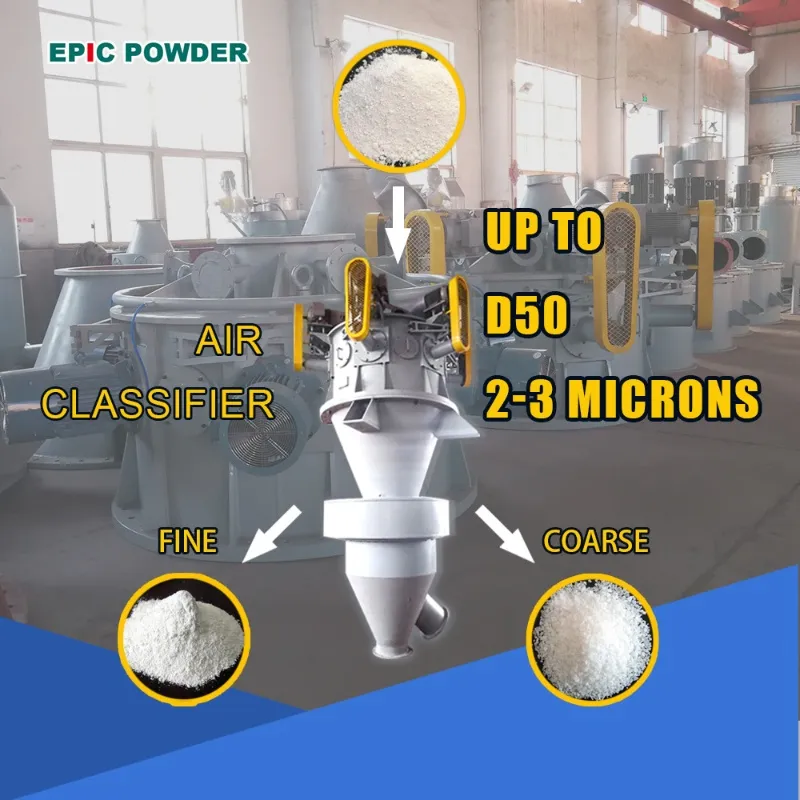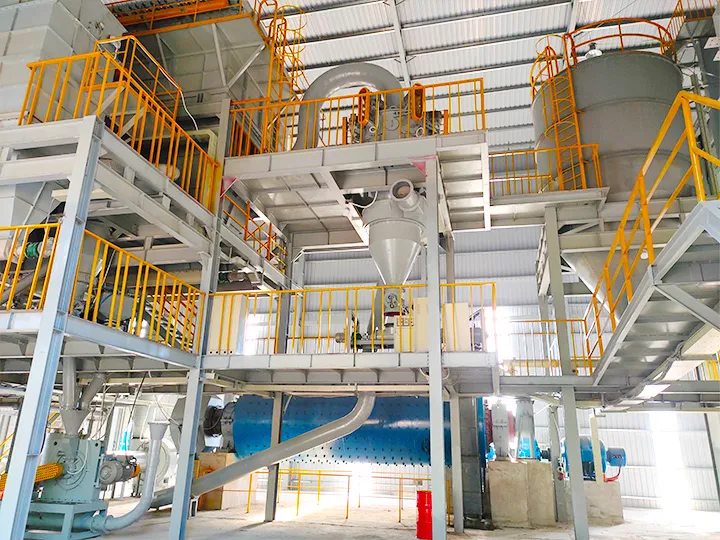Calcium carbonate (CaCO₃) is a widely used inorganic non-metallic material, extensively applied in plastics, paper, coatings, rubber, and many other industries. Its performance—particularly in terms of particle size and morphology—depends almost entirely on one crucial stage: grinding. This Q&A aims to explore the necessity, key equipment, and technologies involved in calcium carbonate grinding.

Q1: Why Must Calcium Carbonate be Ground Before Use?
A: Calcium carbonate raw materials typically exist in the form of minerals such as calcite, marble, or limestone. These mined materials are coarse and of uneven purity, making them unsuitable for direct industrial use. Grinding serves several key purposes:
- Enhanced whiteness: Grinding and classification help remove impurities, increasing both purity and whiteness.
- Particle size reduction: To reach micrometer or even nanometer levels, meeting industry-specific fineness requirements.
- Increased specific surface area: Finer particles provide larger surface areas, enhancing bonding with base materials (like polymers or coating liquids) and improving filling, reinforcing, and thickening properties.
- Improved dispersibility: Uniform fine powder disperses more easily in formulations, preventing agglomeration and improving product quality.
Q2: What Are the Main Types of Calcium Carbonate Grinding, and What Products are They Suited for?

A: Calcium carbonate grinding can be divided into dry grinding and wet grinding, with dry grinding being the mainstream process.
| Grinding Type | Applicable Particle Size | Typical Product | Core Equipment |
|---|---|---|---|
| Dry Grinding | From coarse powder (>10 μm) to ultrafine powder (<5 μm) | Ground Calcium Carbonate (GCC) | Raymond mill, vertical roller mill, mechanical impact mill, ball mill |
| Wet Grinding | From ultrafine (<3 μm) to nanoscale (<100 nm) | High-end coatings, paper fillers, nano calcium carbonate slurry | Stirred mill (sand mill), ball mill |
Wet grinding achieves higher fineness and narrower particle size distribution, making it essential for producing high-end and functional calcium carbonate products.
Q3: What is the Essential Difference Between the Classic “Ball Mill” and “Raymond Mill” in Calcium Carbonate Production?
A:
| Feature | Raymond Mill | Ball Mill |
|---|---|---|
| Working Principle | Primarily grinding with some impact. Grinding rollers press tightly against the ring under centrifugal force; material is ground and carried by airflow. | Primarily impact with some grinding. The rotating cylinder causes grinding media (steel balls) to impact and grind the material. |
| Fineness | Suitable for medium to fine powders (D90 ≈ 10 μm – 325 mesh). | Broad range — from coarse to ultrafine (below 5 μm when combined with classifier). |
| Capacity | Moderate, ideal for small to medium-scale production. | High capacity, suitable for large-scale continuous operations. |
| Process Features | Built-in classifier enables integrated grinding and classification with a simple flow. | Requires external classifier for closed-circuit operation; system is more complex but highly stable. |
| Energy Consumption | Relatively high per unit output. | High during ultrafine grinding, but closed-circuit operation improves efficiency. |
In summary:
Raymond mills are compact, simple, and ideal for producing medium-fine powders for small and medium enterprises, while ball mills—especially when combined with air classifiers—are essential for high-capacity, ultrafine calcium carbonate production.
Q4: How Can Grinding Equipment Produce Nano-scale Calcium Carbonate?

A: There are two main routes to producing nano calcium carbonate:
- Precipitated Calcium Carbonate (PCC): Synthesized chemically via reactions such as lime slaking and carbonation, followed by wet ultrafine dispersion.
- Ultrafine Grinding (GCC): Mechanically refining natural calcium carbonate to its particle-size limit.
In ultrafine grinding, the stirred mill (or sand mill) is the core equipment. It uses a high-speed agitator to drive high-hardness grinding media (e.g., zirconia beads) to perform intense impact and shear actions on calcium carbonate particles, reducing them to below 1 μm or even around 100 nm.
The final wet-ground product is typically sold as a slurry, avoiding drying and dispersion issues.
Q5: Besides Equipment, What Other Technical Factors Are Crucial In The Grinding Process?
A: Grinding is a systematic process, and beyond equipment selection, the following aspects are equally important:
- Use of grinding aids: In dry ultrafine grinding, additives help lower energy consumption and prevent particle agglomeration.
- Classification technology: High-efficiency classifiers are vital for separating qualified product and returning coarse material for regrinding, ensuring a uniform particle size distribution (PSD).
- Surface modification (coating): Freshly ground calcium carbonate particles have high surface energy, leading to poor dispersion. Surface coating (using fatty acids or coupling agents) immediately after grinding or classification enhances compatibility and dispersion in organic matrices.
- Energy efficiency control: Grinding is an energy-intensive process. Selecting high-efficiency equipment (e.g., vertical roller mills) and optimizing parameters are key to reducing production costs.
